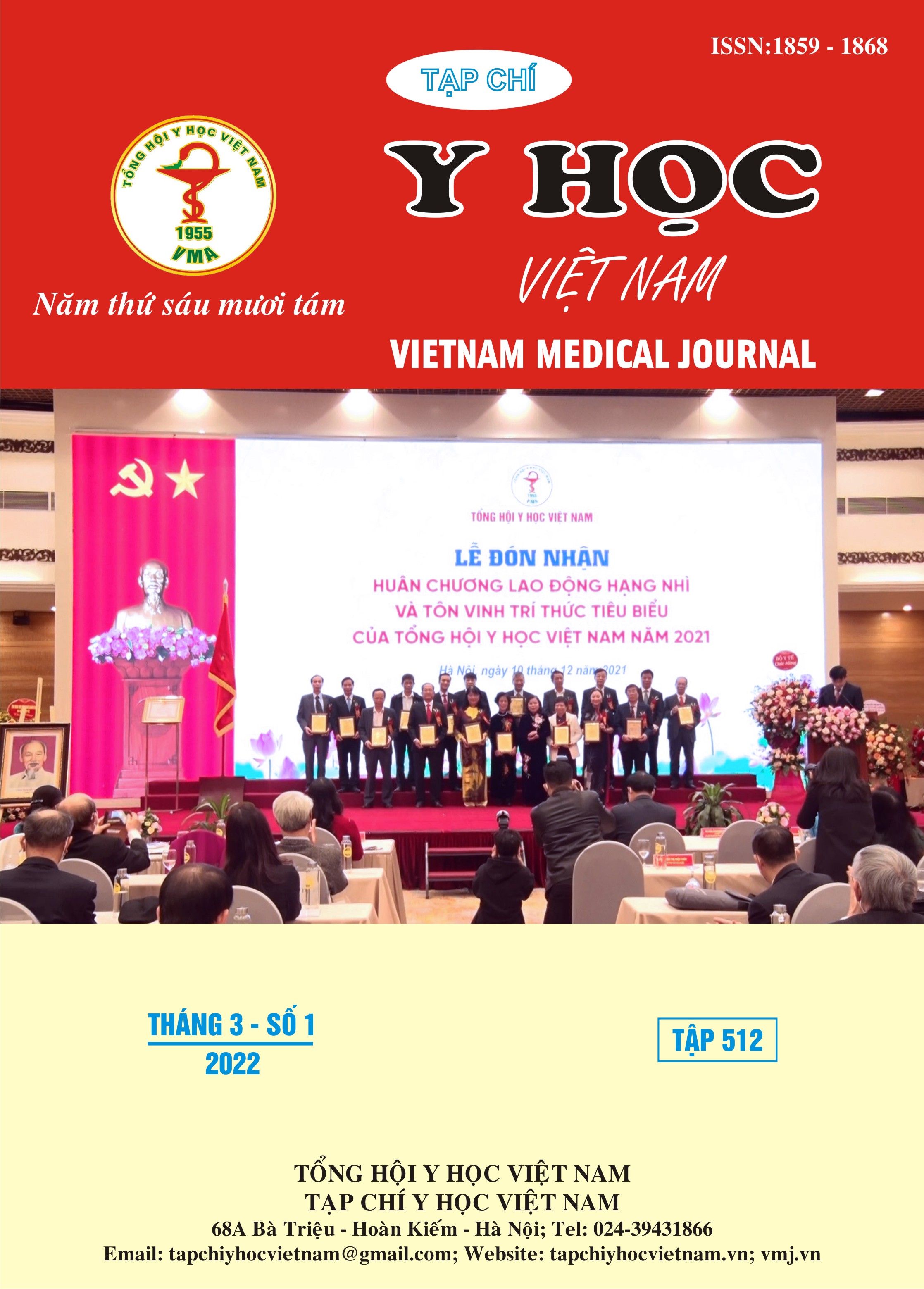EVALUATION OF COLORECTAL POLYPS BY BLI MAGNIFYING ENDOSCOPY WITH BASIC CLASSIFICATION
Main Article Content
Abstract
Background: Colorectal polyp is a common disease and has risks of malignancy progression. The endoscopic histopathological prediction of polyps helps to provide appropriate treatment.BASIC classification based on evaluation of surface and vascular structures using magnifying endoscopy with blue laser imaging (BLI) was proposed to predict histopathological outcome. Objectives: To evaluate the diagnostic performance of magnifying endoscopy with BLI and the BASIC classification for colorectal polyps comparing to histopathology. Materials and methods: We analyzed 166 colorectal polyps examined with magnifying endoscopy with BLI. The polyps were classified by the BASIC classification and sent for histopathology for comparison. The study was conducted at the Institute of Gastroenterology and Hepatology from March 2021 to December 2021. Results: The percentage of hyperplastic polyp, adenomatous polyp, sessile serrated polyp, cancer in the study were 39.2%, 56.0%, 0.6%, and 4.2%,respectively. The sensitivity,specificity,positive predicted value, negative predicted value and accuracy of neoplastic polyp were 96.0%, 93.8%, 96.0%, 93.8% và 95.2%,respectively. Conclusion: Preliminary results shows that magnifying endoscopy with BLI and the BASIC classification is a reliable method to predict the histopathological results of colorectal polyps.
Article Details
Keywords
magnifying endoscopy, BLI, BASIC classification
References
2. Phạm Bình Nguyên (2021), Nghiên cứu giá trị của nội soi phóng đại, nhuộm màu trong chẩn đoán polyp đại trực tràng, Đại học Y Hà Nội.
3. Vũ Việt Sơn, Đào Việt Hằng và cs (2018). Đánh giá polyp đại trực tràng bằng phân loại JNET sử dụng phương pháp nội soi phóng đại nhuộm màu ảo. Tạp chí y học thực hành, 1079.
4. Bisschops R., Hassan C., Bhandari P. et al. (2018). BASIC (BLI Adenoma Serrated International Classification) classification for colorectal polyp characterization with blue light imaging. Endoscopy, 50(03), 211–220.
5. Giacosa A., Frascio F., and Munizzi F. (2004). Epidemiology of colorectal polyps. Tech Coloproctol, 8(S2), s243–s247.
6. Meester R.G.S., van Herk M.M.A.G.C., Lansdorp-Vogelaar I. et al. (2020). Prevalence and Clinical Features of Sessile Serrated Polyps: A Systematic Review. Gastroenterology, 159(1), 105-118.e25.
7. Nagtegaal I.D., Odze R.D., Klimstra D. et al. (2020). The 2019 WHO classification of tumours of the digestive system. Histopathology, 76(2), 182–188.
8.Rondonotti E., Hassan C., Andrealli A. et al. (2020). Clinical Validation of BASIC Classification for the Resect and Discard Strategy for Diminutive Colorectal Polyps. Clinical Gastroenterology and Hepatology, 18(10), 2357-2365.e4.
9.Subramaniam S., Hayee B., Aepli P. et al. (2019). Optical diagnosis of colorectal polyps with Blue Light Imaging using a new international classification. United European Gastroenterology Journal, 7(2), 316–325.
10.Moss A., Bourke M.J., Williams S.J. et al. (2011). Endoscopic mucosal resection outcomes and prediction of submucosal cancer from advanced colonic mucosal neoplasia. Gastroenterology, 140(7), 1909–1918.


